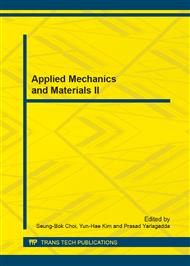p.1495
p.1499
p.1504
p.1509
p.1517
p.1521
p.1525
p.1529
p.1533
Multi-Level Automotive Service Performance Evaluation Model
Abstract:
A multi-level model automotive service performance evaluation model was established based on the servicer-core automotive service network model was proposed. The model was divided into three interrelated levels: the business level, the process level, the learning and development level, respectively used to evaluate business conditions, operating process and development potential of the object. A fuzzy AHP evaluation model for automotive supply chain collaboration performance evaluation was established. A case study was used to show the feasibility of this evaluation model. The results show that, supply chain collaboration performance result of the object was slightly lower than the regional average. Services of the object had unbalanced development and some indicators had great room for improvement.
Info:
Periodical:
Pages:
1517-1520
Citation:
Online since:
December 2013
Authors:
Keywords:
Price:
Сopyright:
© 2014 Trans Tech Publications Ltd. All Rights Reserved
Share:
Citation:


